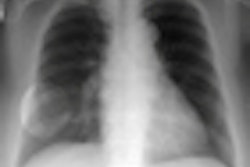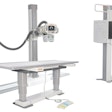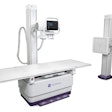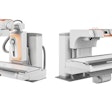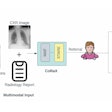A new proposal from the U.S. Department of Health and Human Services (HHS) would allow lung scans of coal miners to be performed with digital x-ray systems in addition to traditional film-based radiography, according to a proposed rule appearing January 9 in the Federal Register.
Current regulations establish specifications for providing, interpreting, classifying, and submitting film-based chest x-rays of underground coal miners for the surveillance of coal workers' pneumoconiosis (black lung) under the Coal Workers' Health Surveillance Program, administered by the National Institute for Occupational Safety and Health (NIOSH).
In addition to minor terminology updates, the new rules would "add a parallel set of standards to specify requirements that would permit the use of digital radiography systems," HHS wrote (Federal Register, January 9, 2012, Vol. 77:5, FR Doc No. 2011-33164). Digital radiography was defined by HHS to include both digital radiography (DR) and computed radiography (CR) systems.
The new proposal comes on the heels of a December 2011 study in Chest that found digital exams to be at least as effective as film radiography for monitoring black lung disease in coal miners. In that study, A. Scott Laney, PhD, and colleagues from NIOSH found that CR was at least equivalent to film-screen radiography for recognizing small pulmonary opacities from pneumoconiosis, and it delivered better image quality (Chest, December 2011, Vol. 140:6, pp. 1574-1580).
The HHS proposal came from NIOSH, said Dr. David Weissman, director of NIOSH's division of respiratory disease studies, in an interview with AuntMinnie.com. "We actually worked up this rule, which seeks to add the ability of facilities that do chest imaging to submit digital chest images for the [surveillance program]," he said. "Facilities will still be able to enroll and submit old-fashioned film-based images, and they will also be able to provide digital. It's an excellent proposal because many facilities we have worked with over the years to provide imaging for coal miners have converted to newer digital systems. This will allow those facilities that have made the transition to come back and work with us again if they had to stop participating."
Weissman said he doesn't know exactly how many facilities have had to stop participating in the program, but more and more are adopting digital, so the change is needed.
Pending adoption of any changes, HHS is inviting commentary on several related questions, including the following:
Does the current scientific evidence support the assertion that the application of digital chest imaging can be equivalent to film-screen radiography, if appropriate equipment, procedures, and methods are applied, in meeting the objectives of the Coal Workers' Health Surveillance Program mandated by U.S. Code - Title 30, Section 843?
Is there evidence that the proposed specifications for equipment, personnel, procedures, and methods will not be adequate to assure that the application of digital chest imaging will be equivalent to film-screen radiography in meeting the objectives of the Coal Workers' Health Surveillance Program? What specific changes are needed to ensure equivalence and what is the evidence supporting those changes?
Is there evidence that any element of the specifications will not be feasible (for technological or financial reasons) for a significant proportion of the digital radiology facilities in coal mining regions? If yes, what changes in the specifications for equipment, personnel, procedures, and/or methods can improve feasibility while continuing to ensure the equivalence of digital chest imaging to film-based chest imaging for accurately detecting occurrence and progression of coal workers' pneumoconiosis (CWP) among coal miners?
An additional proposal amendment would require coal mine operators to provide NIOSH with employee rosters to help improve miner participation in the screening program.
Comments should be made no later than March 9, 2012, to the NIOSH Docket Officer ([email protected]) and include both "RIN 0920-AA21" and "42 CFR 37" in the subject line of the message.
As for the time required to implement the final rule, "much depends on the complexity of the comments received, but our hope is that we'll be able to make whatever changes are necessary to the proposed rule based on the comments" and finalize it "sometime during calendar [year] 2012," Weissman said.
Program requirements
The rule -- 30 U.S.C. 843(a), 957 -- provides for periodic chest x-ray exams throughout the underground coal miner's employment. NIOSH has the authority to administer the program under the Mine Act, a set of rules aimed at protecting U.S. miners.
"The act requires that underground coal mine operators offer new workers a chest roentgenogram (hereafter chest radiograph or x-ray) through an approved facility as soon as possible after employment starts," the rule states. "Three years later a miner must be offered a second chest radiograph. If this second examination reveals evidence of pneumoconiosis, the miner is entitled to a third chest radiograph two years after the second. Further, all miners working in an underground coal mine must be offered a chest radiograph approximately every five years."
The need to evaluate the International Labour Office (ILO) pneumoconiosis classification system in terms of digital radiographs became apparent as DR technology has become more widespread, said Dr. Alfred Franzblau, associate dean for research at the University of Michigan's School of Public Health. ILO published guidelines in November based on digitized versions of plain-film radiographs. The publication is considered a preliminary step pending the ILO's full acceptance of digital imaging, Franzblau said. The updated ILO guidelines, published on November 17, 2011, can be accessed here.
Exams may be read by "A" readers, clinicians who have demonstrated knowledge of the ILO Classification of Radiographs of Pneumoconioses by completing a NIOSH-approved course or submitting six radiographs with satisfactory classifications, or by "B" readers, who have demonstrated competency by classifying a test set of radiographs in a test administered by NIOSH.
"What the person who classifies images does is compare the examinee's image to a standard image, and they rate which standard image the examinee's image is closest to," Weissman said. With the new digital image guidelines published in November, "it will be possible for physicians who are doing the classifications to display them side by side -- the standard images on one monitor and the examinee's images on the other monitor," he said.
At least equivalent to film-screen radiography
In Laney and colleagues' comparison of acquired storage-phosphor CR and standard film-screen images, they examined 1,401 male underground miners participating in NIOSH's Enhanced Coal Workers' Health Surveillance Program. Findings were based on 2,408 readings, half from each modality, and image quality was graded on a four-point scale. CR yielded higher image quality than film-based radiography. In all, 93.4% of the CR studies were classified as "good" or "acceptable, no defects," compared with 79.6% of the film-screen studies, the group wrote.
In addition, CR revealed more small opacities than film-screen radiography, with moderate to good intermodality agreement. Overall, interreader and intrareader variability did not differ significantly between the modalities.
"Under optimal conditions, using standardized methods and equipment, reader visualization of small pneumoconiotic opacities does not appear to differ meaningfully, whether using CR or [film-screen radiography]," Laney and colleagues wrote in Chest. "Variability in ILO classifications between imaging modalities appears to be considerably lower than variability among readers. The well-documented challenge of reader variability does not appear to be resolved through the use of digital imaging alone, and additional approaches must be evaluated."
Among its goals, the Mine Act aims to ensure that dust concentrations in underground coal mines are low enough to permit miners to be employed for a lifetime without incurring disability from pneumoconiosis or any other occupational diseases.
"However, because primary prevention measures may not be fully effective, secondary measures are recommended as a means to further protect workers," HHS stated in the Federal Register. "Secondary prevention involves ongoing miner health monitoring to recognize abnormalities early so that the miner has the necessary information to take appropriate action to prevent disease progression."






